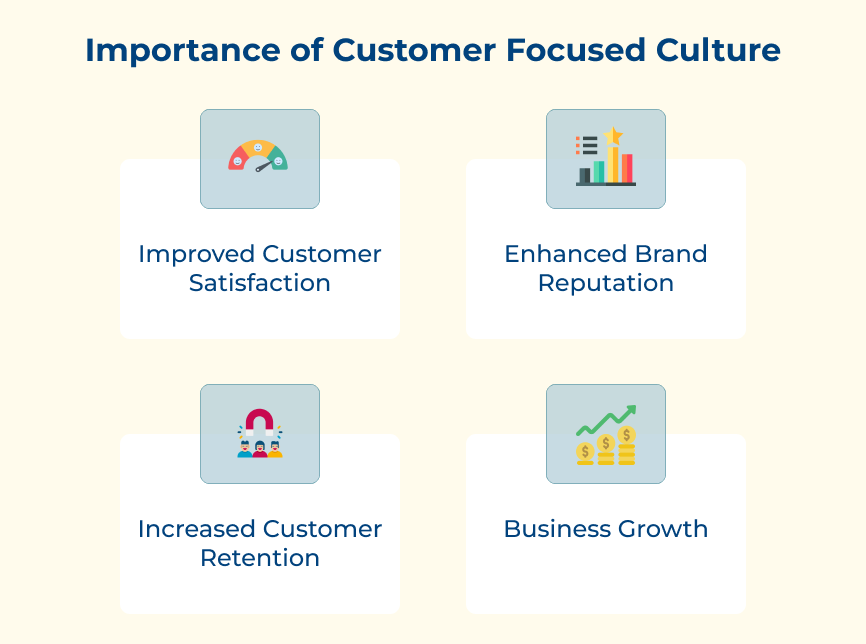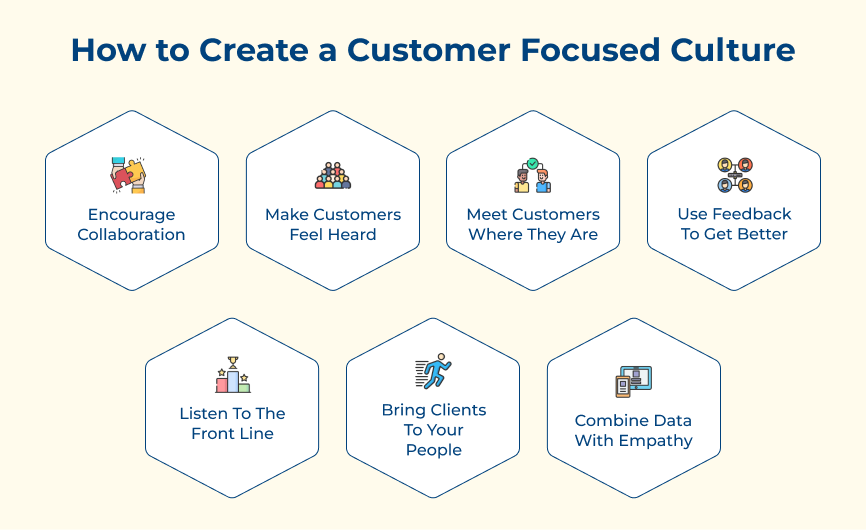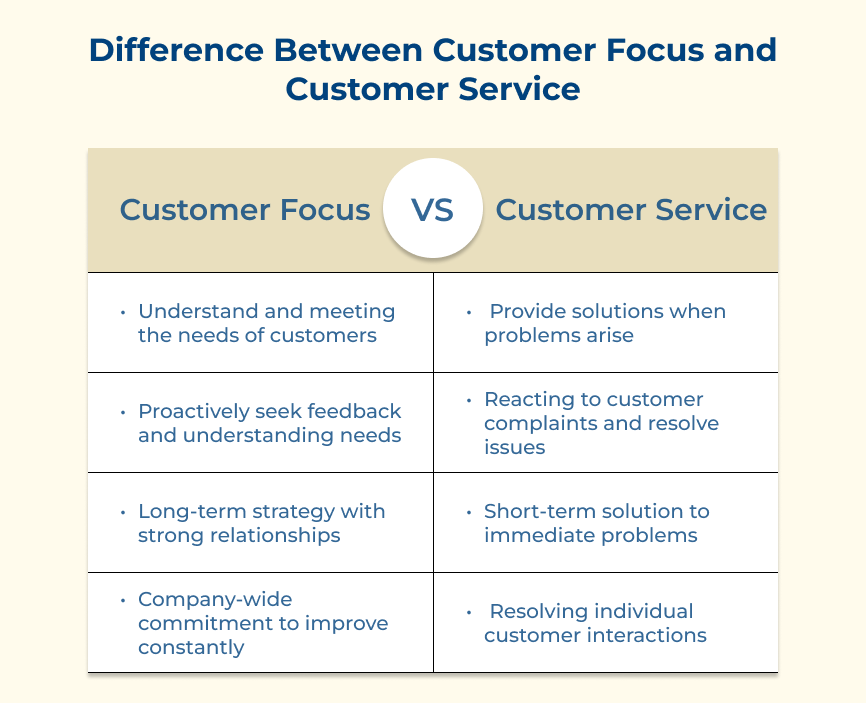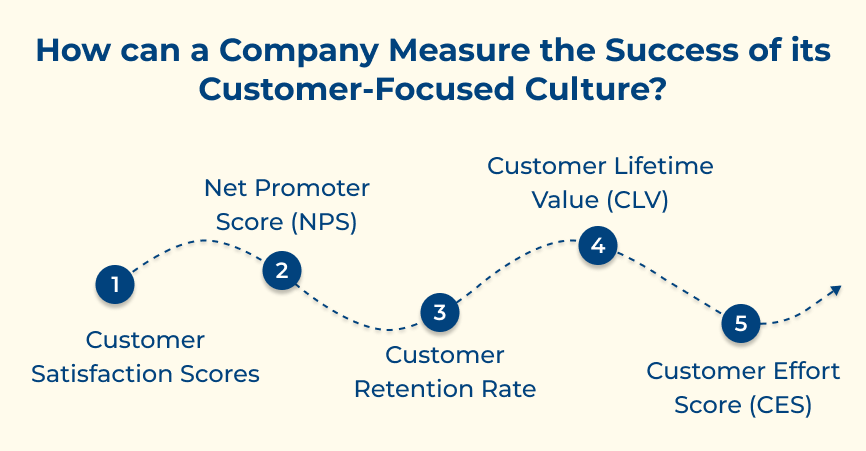1. Proactive & Reactive
Customer focus involves anticipating the needs and wants of the customers before they even express them. It requires a deep understanding of the target market and a commitment to creating solutions that meet their specific needs.
Customer service is reactive and involves addressing customer complaints or issues as they arise. While customer service is important for maintaining customer satisfaction, customer focus is what drives long-term loyalty and repeat business.
2. Strategic & Tactical
A customer focused approach requires a strategic mindset and a commitment to long-term customer satisfaction. It involves conducting market research, analyzing customer feedback and continuously adapting the solutions to meet the changing needs of the customers.
Customer service is more tactical and involves resolving individual customer issues efficiently. While both are important, customer focus is what drives the overall direction of the business. The customer service is more focused on day-to-day operations.
3. Relationships & Transactions
Customer focus is all about building strong, long-lasting relationships with the customers. It involves understanding their unique preferences, communicating with them regularly and showing that the company values them.
Customer service is more transactional and involves resolving individual customer issues on time. Customer service is important for maintaining customer satisfaction. While ustomer focus is what builds trust and loyalty over time.
4. Focus
Businesses need to put themselves in the shoes of their customers and understand their perspective to truly be customer focused. It requires empathy and a willingness to listen to their feedback, even if it’s negative.
Customer service requires efficiency and the ability to resolve customer issues effectively. While both are important, customer focus requires a deeper emotional connection with the customers.
5. Innovation & Relationships
A customer focused approach can drive innovation and help businesses stay ahead of the competition. Listening to the customers and understanding their needs allows businesses to develop new products or services that meet their expectations.
Customer service is more focused on maintaining existing relationships and ensuring that the customers are satisfied with their experience. While both are important, customer focus is what drives growth and long-term success in the business.
Customer Focused Culture Examples of Companies That Have Successfully Implemented it
Companies that prioritize their customers and make their satisfaction a top priority often see significant impacts on their bottom line. Here are five customer focused culture examples of companies that have successfully implemented the strategy:
1. Zappos
Zappos is well-known for its exceptional customer service. The company has built its brand around providing a seamless shopping experience and going beyond to meet customer needs. Zappos offers a free shipping, a 365-day return policy and 24/7 customer support. The customer focused approach has led to high customer loyalty and word-of-mouth referrals.
2. Amazon
Amazon is another prime example of a company that places a strong emphasis on customer satisfaction. The e-commerce giant has revolutionized the way people shop online. They offer a wide selection of products, fast shipping options and convenient return policies. Amazon’s commitment to providing a seamless shopping experience has helped it become one of the most valuable company customer-focused.
3. Chick-fil-A
Chick-fil-A is known for its exceptional customer service and attentiveness to customer needs. The company’s employees are trained to prioritize customer satisfaction and go the extra mile to ensure a positive dining experience. Chick-fil-A’s customer-focused approach has not only helped them build a loyal customer base but has also contributed to their consistent sales growth and expansion into new markets.
4. Salesforce
Salesforce is a prime example of a business that puts the customer at the center of everything they do. The company’s cloud-based platform is designed to help businesses better understand or connect with their customers. It leads to better sales and customer loyalty. Salesforce’s customer-focused culture has helped them attract and retain clients, leading to strong market dominance.
5. Ritz-Carlton
Ritz-Carlton is a luxury hotel chain renowned for its exceptional customer service and personalized experiences. The company empowers its employees to anticipate and exceed customer expectations, creating memorable moments for guests. Ritz-Carlton’s customer-focused approach has helped them earn a reputation as one of the top luxury hotel brands in the world. It leads to high occupancy rates and premium pricing.
How can a Company Measure the Success of its Customer-Focused Culture?
Following are the essential methods and indicators to accurately measure the success of a customer-focused culture within your organization.















